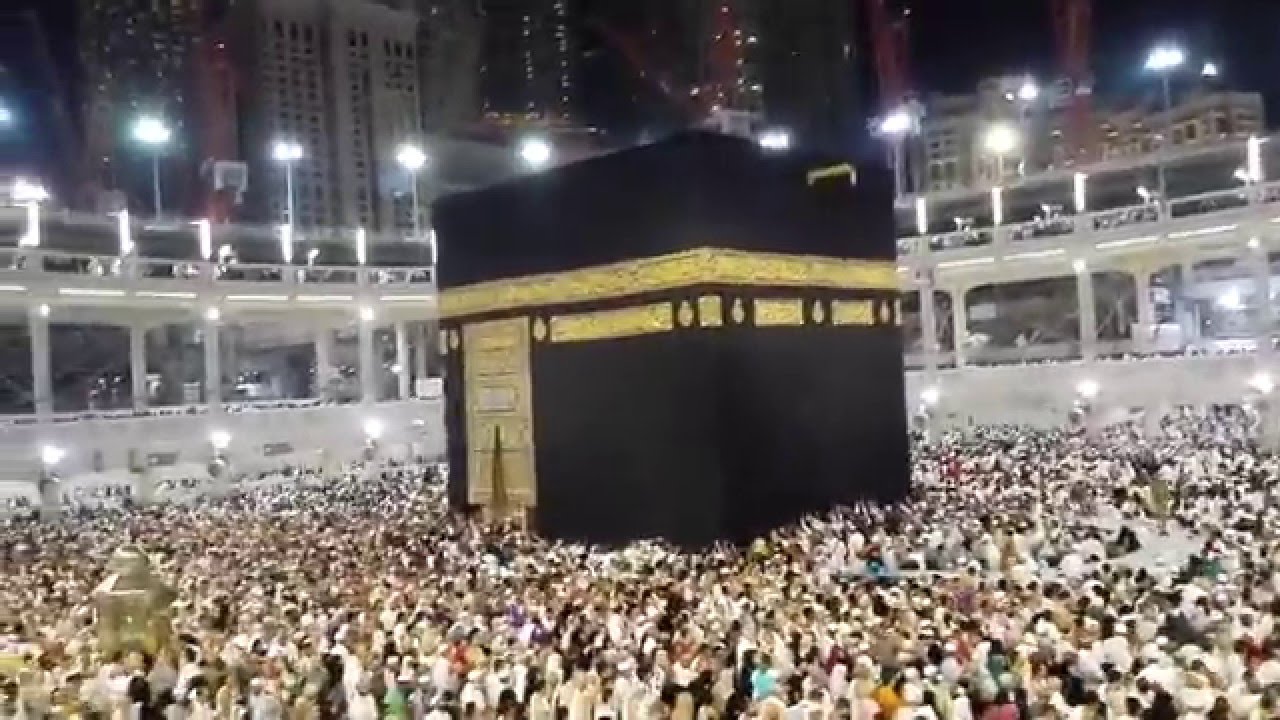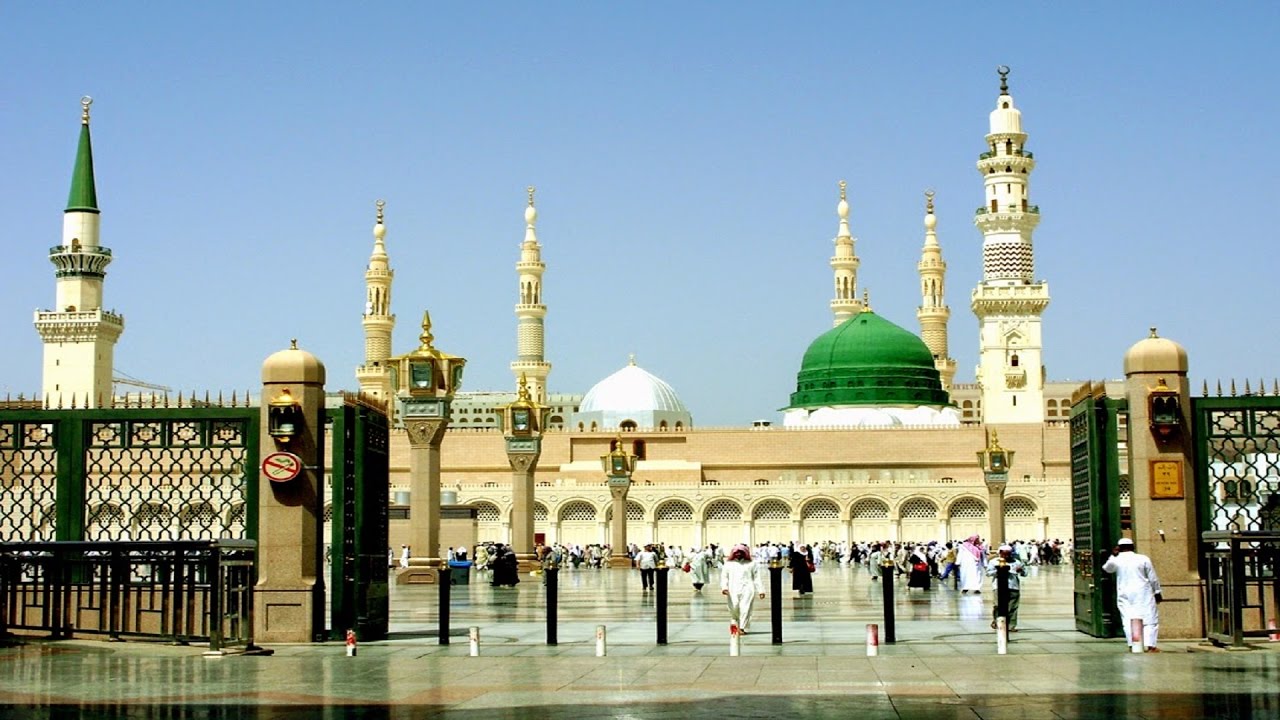Dars e Imam-Tombs
“Bismillahir Rahmannir Raheem””Al-Hamdu Lillaahi Rabbil ‘Aalameen was Salaatu was- Salaamu ‘Alaa Sayidinaa Muhammadin wa Aalihi wa Asabihi Ajma ‘een (tauheed- risalat- ahkirat and islam-iman-ihsan)
Narrating the incident of the People of the Cave [Ashaab-e-Kahf), the Holy Quran states, “The person who was dominant in this matter said, “We shall build a Musjid over the People of the Cave.” – 18/21 .Under the Bunyaanan of this ayat, Tafseer Roohul-Bayaan states, “They said, “Build for the People of the Cave a wall that surrounds their graves so that it is safe from the knowledge of people, just as how the Holy Prophet ﷺ grave is surrounded by four walls.”.This was not sanctioned, however, and so a Musjid was built. Under the commentary of Musjidaa in this ayat, Allama Ismail Haqqi (ra)writes, “People can read namaaz in it and attain barkat through them.” – Tafteer Roohul-Bayaan .
Hadrat Urwah (ra)states that in the time of Waleed ibn Abdul-Malik, a wall of the Rauza Sharif of the Holy Prophet ﷺ fell down and the Sahaaba busied themselves in repairing it. A foot was visible and, after seeing it, people became concerned because they thought that it belonged to the Prophet ﷺ. Hadrat Urwah (ra)said, “Oath on Allah(swt)! This is not the foot of the Holy Prophet ﷺ. It is the foot of Umar “ 12.6-Bukhari, Vol. 1, Kitaabul-Janaaiz, Baabu Maa Ja ‘a fi-Qabri Nabi (saws).
Shaikh Abdul-Haqq Muhaddith Dehlwi (ra)writes, “In the year 550 A.H, Jamaaluddin Asfahaani (ra)put a lattice made of sandalwood around this wall in the presence of the Ulama (Learned). Later, in 557 A.H, some Christians came to Madina Sharif in the garb of pious people and planned to dig a tunnel and remove the blessed body of Rasoolullah ﷺ from his Rauza Sharif. The Messenger came to the king in a dream three times and informed him of their sinister plan. As a result, the king executed them, dug a very deep foundation around the Rauza Sharif and filled it with lead. In 678 A.H, Sultan Saalihi built this green dome which is present until today.” -Jazbul-Quloob ilaa Diyaaril-Mahboob.
These extracts prove that the Sahaaba built the Rauza Sharif. If someone says, “This is unique to the Prophet ﷺ we reply that Hadrat Abu Bakr (ra)and Hadrat Umar (ra)are both buried in the Rauza Sharif, and so will Hadrat Esa (as) be buried there as well. Thus, it is not a specialty of Rasoolullah ﷺ.
When Hadrat Imam Hasan ibn Hasan ibn Ali (ra)passed away, his wife kept a dome over his grave for the entire year.” – Bukhart, Vol. 1, Kitaabul-Janaaiz and Mishkaat, Baabul-Bukoa alal-Mayyit .This also occurred during the time of the Sahaaba and in their presence. None of them rejected this. Also, his wife remained at the grave for an entire year and thereafter returned home, proving the permissibility of attendants (Mujaawars) at the graves of the Pious.
Under the ayat, “انما یعمر مسجداللہ من امن باللہ” surah tauba verse 18 Tafseer Roohul-Bayaan states, “Constructing buildings on the graves of the Learned (Ulama), Saints and Honored is a permissible action when the intention behind doing so is to inculcate the recognition of greatness and appreciation in the hearts of people. This is so that they don’t disregard the people of these graves.”
Mulla Ali Qaari (ra)writes, ‘The former Ulama have permitted the building of edifices on the graves of the Mashaaikh and Ulama so that people may visit them and sit or rest there,”- Mirqaat, Kitaabul-Janaaiz, Baabu Dafnil-Mayyit
Shaikh Abdul-Haqq Muhaddith Dehlwi (ra)writes, “In the latter times, due to the general masses being very perceptive to visible things, the construction of buildings on the graves of the Mashaaikh and pious people increased based on wisdom. This is so that the honour and rank of the Saints become apparent to the Muslims, especially in India, as many Kuffaar and enemies of the deen are found here. These buildings and places proclaim the glory of the Friends of Allah(swt)and are a means of instilling awe within the hearts of the Kuffaar. There are many things which were Makrooh but have become preferred (Mustahab) in the latter times.” – Sharah Safrus-Sa’adat .
Shaami states, “If the deceased is from the Mashaaikh, Ulama and Sa’adat, to build an edifice over his grave is not Makrooh.” -Vol. 1, Baabud-Dafn
Durre-Mukhtaar states, “A building shouldn’t be built on a grave, but it has been said that there is nothing wrong with this and that the latter ruling is accepted.” Baabud-Dafn .Tahtaawi alaa-Maraaqil-Falah states, “The people of Egypt have the habit of placing stones on the graves so that they are saved from being effaced and disentombed. A grave shouldn’t be plastered or mortared and no building should be built over it. However, it has been said that there is nothing wrong with doing so and this is the accepted ruling.” – Pg. 335
Imam Sha’raani (ra)states, “It is based on this that other Imams say that a building shouldn’t be built on a grave nor should it be plastered, even though the ruling of Imam Abu Hanifa (ra)is, “All of these things are permissible.” So, the former sayings have hardship and the latter one has ease:’ – Meezaan-e-Kubra, Vol.1, Kitaabul-Janaaiz .It has now been absolutely proven that according to the Imam of the muzhab himself (Imam Abu Hanifa (ra), building domes, etc. over the graves is permissible.
It has been stated that the life of a Muslim before and after his death are the same (i.e. they should be respected equally). – Mishkaat, Baabud-Dafn and Mirqaat
To kiss the graves of your parents is permissible. – Alamghiri, Kitaabul-Karaahiyat and Ashiatul-Lam’aat, Baabud-Dafn .
Likewise, the Jurists state that we should sit away from the grave equal to the distance we used to sit away from the person of the grave during his lifetime. This proves that the respect of the deceased is similar to the respect in his lifetime.
Materialistic body of human =dark veils/weakness/desires
Materialistic world is opaque(prevents transmission of light)
When I want to talk to allah I say prayers and when I want that he talk to me I recite quran- Hazrath Ali(ra)
Make sure you forward this to others .


